Building an Age-Friendly Ecosystem
Our team at Age Friendly Advisor decided it was important to outline what “age-friendliness” looks like in practice. So we helped convene a group of experts.

You’ve heard the phrase “age-friendly.” Over the past few years, it has been used more and more often—by towns, states, countries, employers, the World Health Organization and even the United Nations—in the interest of helping older adults know where they can turn to avoid ageism, and building a world where people of all ages can thrive.
But as the phrase gets used more and more widely, we’re also continuing to ask: what does “age-friendly” really mean? Much like the word “eco-friendly,” sometimes it might feel vague.
We can’t allow the term to become hollow. If we do, it will become harder to advocate for the needs of older adults.
In order to prevent this from happening, our team at Age Friendly Advisor decided it was important to outline concretely what “age-friendliness” looks like in practice.
So we helped convene a group of experts. They came from six countries and many different fields—nonprofits, hospitals, senior living, universities—and all have been focused in some way on the idea of promoting age-friendliness. We called the meeting “Building a Coordinated Age Friendly Ecosystem,” because in the work we do it’s become clear that this is a very interdisciplinary project. Older adults may experience ageism at many different moments in their life—whether it’s when they go into the hospital, when they try to access transportation in their city, or when they apply for a job. So it’s important to promote age-friendliness with a united front and build an “ecosystem” around it.
Among the organizations present at the conference were: the Brown University School of Public Health, the John A. Hartford Foundation, Mass General Brigham, the International Federation on Ageing, Lasell Village, the Milken Institute, the Florida and New Jersey Departments of Health, and Brazil’s International Longevity Centre.
While these institutions and their leaders are essential participants in this conversation, however, we feel it’s important that not only “experts” talk about what age-friendliness means, but individuals as well—so that everyone is part of this movement and it can grow from both the bottom up and the top down.
If older adults are not familiar with what both ageism and age-friendliness look like, then they will not be able to call ageism out when they see it and pursue more age-friendly options.
In the hope of inviting our readers into this conversation, we brought in a talented graphic artist named Christpher Fuller to illustrate our dialogue. Check out his sketches below to get an idea of some of the main ideas that we talked about.
In the comments below, share your thoughts. How can we build an age-friendly ecosystem across healthcare, education, employment, government, and beyond?
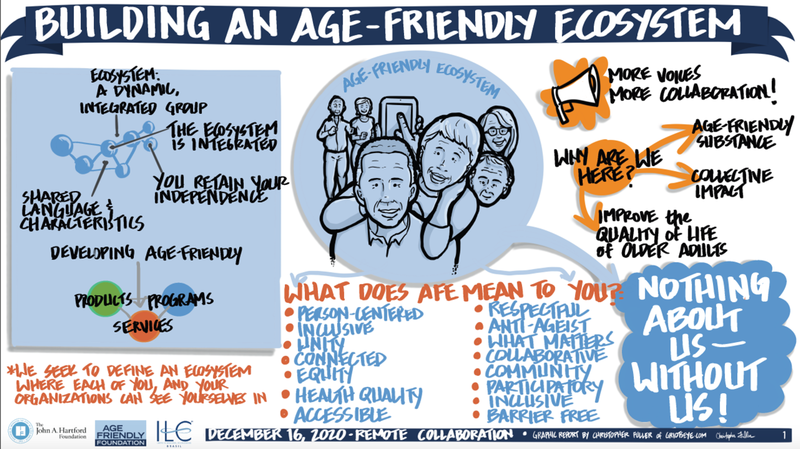
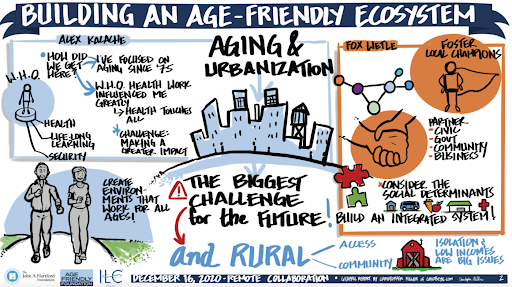
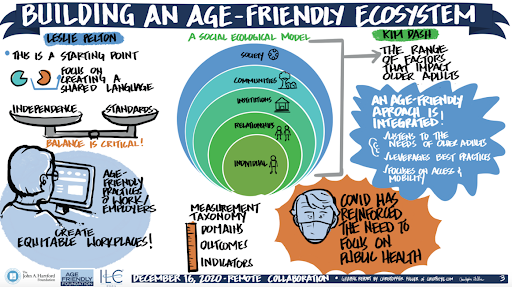
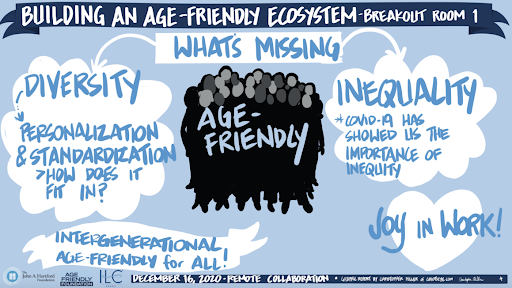




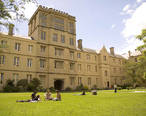









There are no comments for this article yet. Be the first to leave a comment